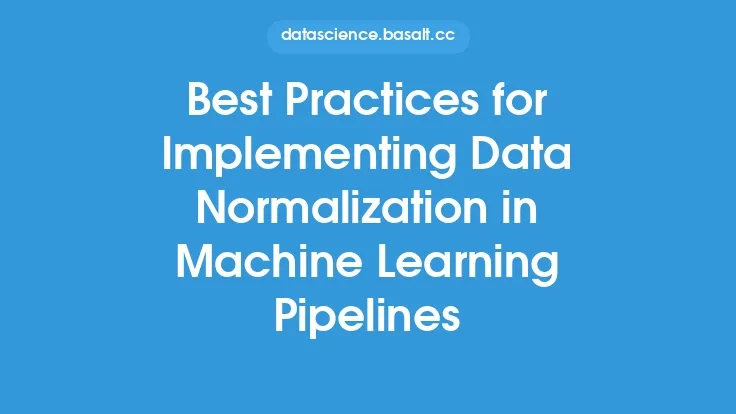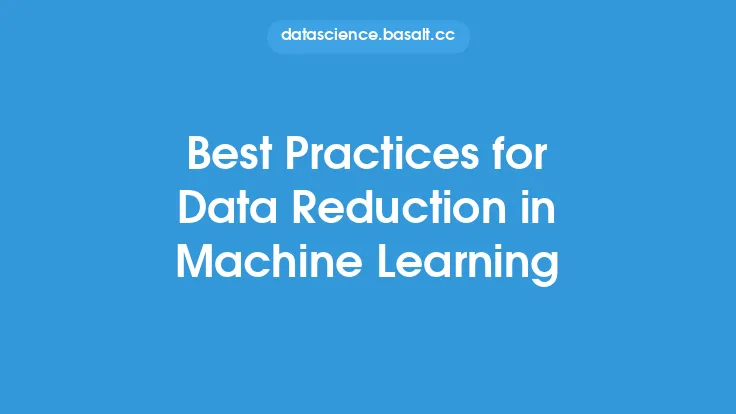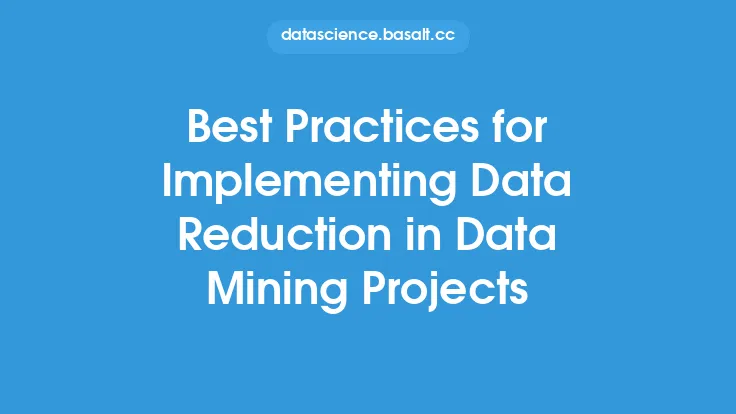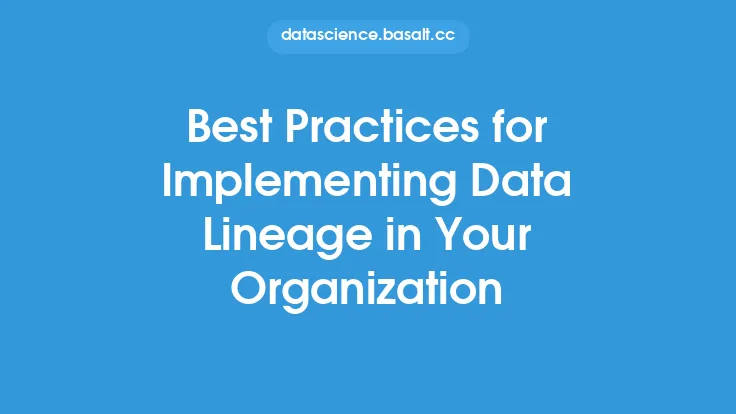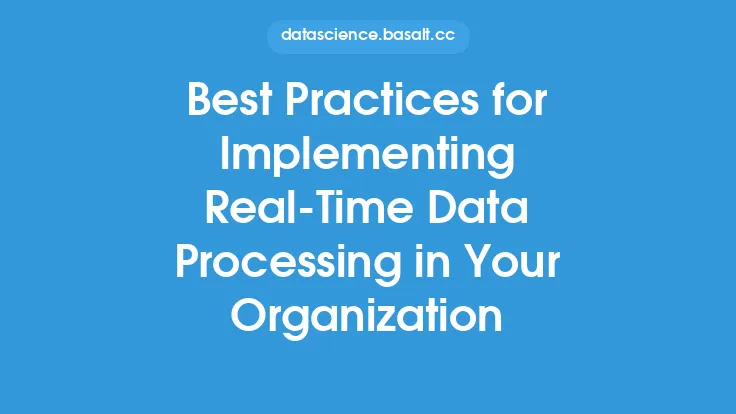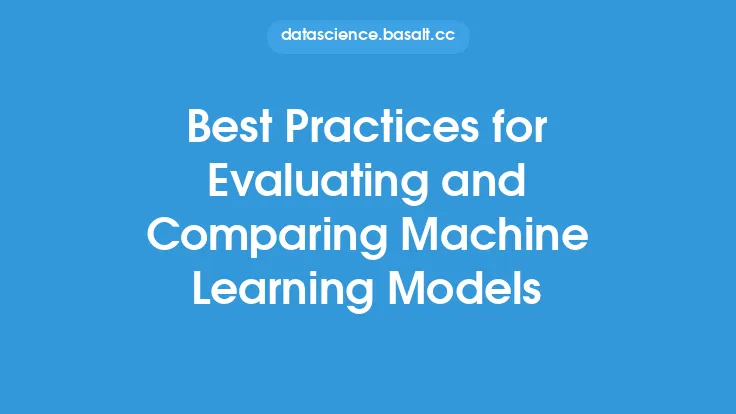Implementing transfer learning in machine learning projects can be a powerful way to improve model performance and reduce training time. Transfer learning involves using a pre-trained model as a starting point for a new, but related, task. The pre-trained model has already learned to recognize certain features and patterns in the data, which can be leveraged to improve the performance of the new model. However, to get the most out of transfer learning, it's essential to follow best practices.
Understanding Pre-Trained Models
Pre-trained models are the foundation of transfer learning. These models have been trained on large datasets, such as ImageNet, and have learned to recognize a wide range of features and patterns. When selecting a pre-trained model, it's crucial to consider the similarity between the pre-trained model's task and the new task. For example, if the new task involves classifying images of animals, a pre-trained model that has been trained on ImageNet, which includes a wide range of animal images, would be a good choice. On the other hand, if the new task involves classifying medical images, a pre-trained model that has been trained on a medical image dataset would be more suitable.
Choosing the Right Pre-Trained Model
With so many pre-trained models available, choosing the right one can be overwhelming. Some popular pre-trained models include VGG16, ResNet50, and InceptionV3. When selecting a pre-trained model, consider the following factors:
- The size of the model: Larger models tend to perform better but require more computational resources and memory.
- The complexity of the model: More complex models can learn more abstract features but may be more prone to overfitting.
- The dataset used to train the model: If the pre-trained model was trained on a dataset similar to the new task's dataset, it's more likely to perform well.
- The performance of the model: Look for models that have achieved state-of-the-art performance on benchmark datasets.
Fine-Tuning the Pre-Trained Model
Once a pre-trained model has been selected, the next step is to fine-tune it for the new task. Fine-tuning involves adjusting the model's weights to fit the new task's dataset. There are several ways to fine-tune a pre-trained model, including:
- Weight freezing: Freezing the weights of the pre-trained model and only training the new layers.
- Weight fine-tuning: Fine-tuning the weights of the pre-trained model and the new layers.
- Layer addition: Adding new layers to the pre-trained model and training the entire network.
The choice of fine-tuning method depends on the similarity between the pre-trained model's task and the new task, as well as the size of the new task's dataset.
Hyperparameter Tuning
Hyperparameter tuning is a critical step in transfer learning. Hyperparameters, such as learning rate, batch size, and number of epochs, can significantly impact the performance of the model. When tuning hyperparameters, consider the following:
- Learning rate: A lower learning rate can lead to more stable training but may require more epochs.
- Batch size: A larger batch size can lead to faster training but may require more memory.
- Number of epochs: The number of epochs depends on the complexity of the model and the size of the dataset.
Hyperparameter tuning can be performed using techniques such as grid search, random search, or Bayesian optimization.
Regularization Techniques
Regularization techniques, such as dropout and L1/L2 regularization, can help prevent overfitting when fine-tuning a pre-trained model. Dropout involves randomly dropping out neurons during training, while L1/L2 regularization involves adding a penalty term to the loss function to discourage large weights. The choice of regularization technique depends on the complexity of the model and the size of the dataset.
Evaluation Metrics
Evaluating the performance of a transfer learning model is crucial to determining its effectiveness. Common evaluation metrics include accuracy, precision, recall, F1 score, and mean squared error. The choice of evaluation metric depends on the task and the dataset. For example, accuracy is a suitable metric for classification tasks, while mean squared error is suitable for regression tasks.
Common Challenges
Transfer learning can be challenging, and several common issues can arise, including:
- Overfitting: The model becomes too specialized to the new task's dataset and fails to generalize to new data.
- Underfitting: The model fails to learn the features and patterns in the new task's dataset.
- Domain shift: The distribution of the new task's dataset is significantly different from the pre-trained model's dataset.
To overcome these challenges, consider using techniques such as data augmentation, batch normalization, and domain adaptation.
Real-World Applications
Transfer learning has numerous real-world applications, including:
- Image classification: Transfer learning can be used to classify images of objects, scenes, and actions.
- Natural language processing: Transfer learning can be used to classify text, sentiment analysis, and language translation.
- Speech recognition: Transfer learning can be used to recognize spoken words and phrases.
- Medical imaging: Transfer learning can be used to classify medical images, such as tumors and diseases.
Conclusion
Transfer learning is a powerful technique for improving model performance and reducing training time. By following best practices, such as selecting the right pre-trained model, fine-tuning the model, and using regularization techniques, developers can create highly accurate models for a wide range of tasks. As the field of machine learning continues to evolve, transfer learning will play an increasingly important role in enabling the development of more accurate and efficient models.
